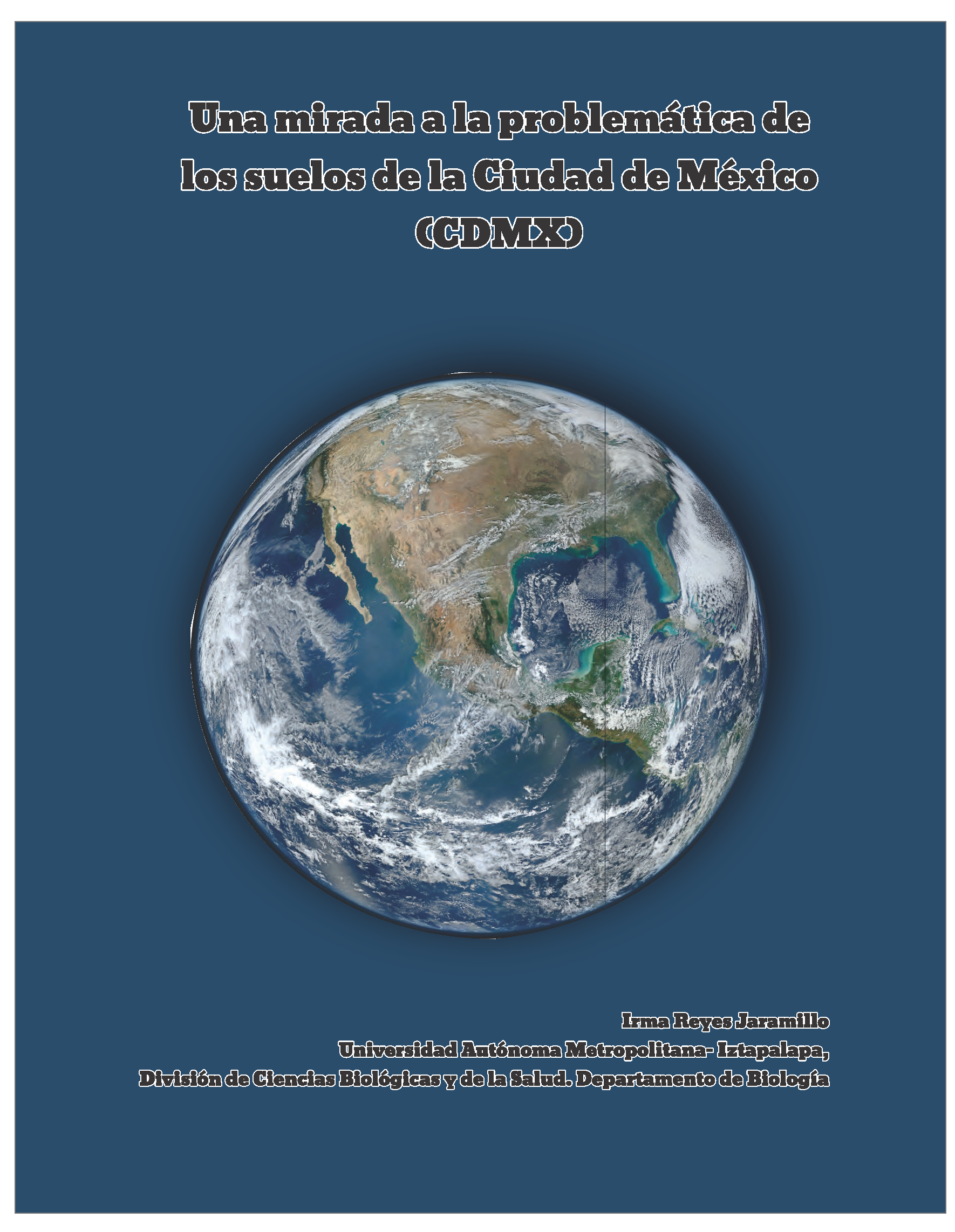A look at the problematic of the soils of Mexico City (CDMX)
Abstract
Mexico City (CDMX) is administratively divided into urban land and conservation or rural land. The urban land is the region where most of the population lives and is located mainly in the downtown area, where there are large buildings, avenues and most of the human settlements are located. The rural land covers important areas of nine delegations (mayor ships) where almost a quarter of the population lives, provides environmental services for the sustainability of the region and captures about 70% of the water that is used for various activities in the basin. It is currently subject to strong pressure that puts at risk the environmental services that it provides and that represent the future viability for the city. The growth of the urban area increases the sealed soils preventing the soil from performing its natural functions, with important economic and health consequences. Sorne actions aimed at a sustainable goal are recommended, in order to preserve rural and urban land, which means a challenge in which society and the govemment of the CDMX will have to assume to guarantee its conservation and proper functioning. On the other hand, the soil groups are mentioned from the pedological knowledge framed in the world classification (WRB) that covers 15 different soils, predominating in the mountainous areas the Andosols, Leptosols and Phaeozems. In the lacustrine zone the saline and Gleysols, as well as the soils generated by human action such as Anthrosols and Technosols.
Downloads
References
ACTrees, 2011. Benefits of trees and urban forests: A research list. Recuperado de http://actrees.org/files/Research/benefitsof_trees.pdf. Consultado 9 de enero de 2018.
Aguilar, A. G. Sustentabilidad Urbana y Política UrbanoAmbiental. La Ciudad de México y el Suelo se Conservación. En: La Sustentabilidad en la Ciudad de México, El suelo de Conservación en el Distrito Federal. (Eds.) A. G. Aguilar e l. Escamilla .( pp. 23-66). MAPorrúa librero-editor-México. (2013).
Cram, S., H. Cotler, L. M. Morales, l. Sommer y E. Carmona (2008), "Identificación de los servicios ambientales potenciales de los suelos en el paisaje urbano del Distrito Federal", Investigaciones Geográficas, Boletín, núm. 66, Instituto de Geografia, UNAM, México, pp. 81-104.
FAO, PNUMA y UNESCO. 1980. Metodología provisional para la evaluación de la degradación de suelo. Roma. 86pp.
Guevara, S. y P. Moreno (1987), Áreas verdes de la Zona Metropolitana de la Ciudad de México. Atlas de la Ciudad de México, Departamento del Distrito Federal y El Colegio de México, Plaza y Valdés, México.
GDF. 2006. Programa Estratégico Forestal del Distrito Federal (PEF-DF) 206-2025. Secretaría del Medio Ambiente, Dirección General de la Comisión de Recursos Naturales y Desarrollo Rural. México, D.F. 80 pp.
GDF.2012. Atlas geográfico del suelo de conservación del Distrito Federal. Secretaría del Medio Ambiente, Procuraduría Ambiental y del Ordenamiento Territorial del Distrito Federal, México, D.F. 96 pp. Recuperado de https://agua.org.mx/wpcontent/uploads/2012/06/AtlasGeograficoSueloConservacionDF2012.pdf
INEGI. 2002. Recursos naturales y servicios ambientales, estadística del medio ambiente del Distrito Federal y Zona Metropolitana. México, D.F. 24 pp. Recuperado de http://internet.contenidos.inegi.org.mx/contenidos/productos/prod_serv/contenidos/espanol/bvinegi/productos/historicos/2104/702825480509/7028254805094.pdf
IUSS Working Group, WRB. 2008. Base referencial mundial del recurso suelo. Un marco conceptual para
clasificación, correlación y comunicación internacional. FAO, ISRIC. Roma.106pp.
IUSS Working Group, WRB. 2015. World reference base for soil resources, International soil classification system for naming soils and creating legends for soil maps. FAO, ISRIC. Rome.
http://www.fao.org/3/i3794en/l3794en.Pdf
Padilla, G. S. 2017. Metrópolis México. Formación Consolidación. Ed. UAM. Unidad Azcapotzalco, Departamento del Diseño en el Tiempo. Área de Arquitectura y Urbanismo Internacional. 280 pp.
Rodríguez, G., M. de L, López, B.J. y Vela, C. G. Cambio de Cobertura Vegetal y Uso del Suelo de Conservación, Distrito Federal. En: La Sustentabilidad en la Ciudad de México, El suelo de Conservación en el Distrito Federal. (Eds.) A. G. Aguilar e l. Escamilla. (pp. 149-175). MAPorrúa librero-editor-México, (2013).
SEDEMA, 2018. Cuidar el agua es cosa de todos. Recuperado de http:/ /www.cuidarelagua.cdmx.gob SMA, 2003. El suelo de conservación del Distrito Federal, Gobierno del Distrito Federal, 19-09-2003, recuperado de http://sma.df.gob.mx/sma/index.






